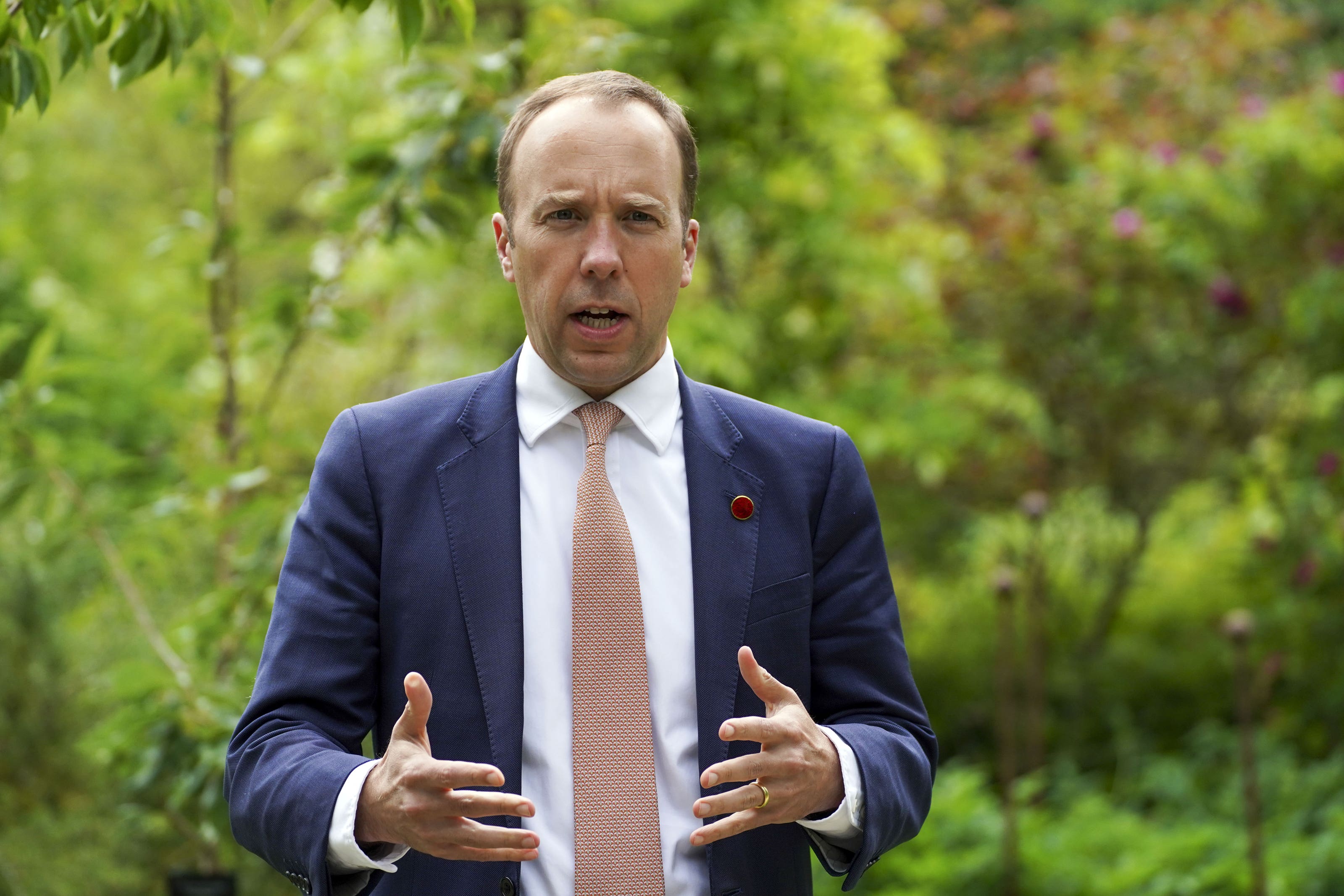Matt Hancock discusses his diagnosis: 9 things you may not know about dyslexia
As Matt Hancock discusses his dyslexia on I’m A Celebrity…, charities reveal things about the condition that may surprise you. By Lisa Salmon.

Most people have heard of dyslexia, but although 10% of the population is believed to have the condition, it can be misunderstood.
Matt Hancock has now shone a spotlight on the learning difficulty by discussing his own dyslexia diagnosis with campmates in the I’m A Celebrity… Get Me Out Of Here! jungle.
The former health secretary, 44, opened up about being diagnosed as dyslexic, telling comedians Babatunde Aleshe and Seann Walsh: “The moment I was identified as dyslexic at university it was ‘Ahh so actually I am OK with language, it’s just my brain works differently and I can work on that’.”
Hancock has introduced a bill to bring in universal screening for dyslexia in primary schools, and a spokesperson for the politician has said: “By going on the show, Matt hopes to raise the profile of his dyslexia campaign and will use the platform to talk about an issue he really cares about in front of millions of people.
“Matt is determined that no child should leave primary school not knowing if they have dyslexia.”
The MP speaking out about his condition has been welcomed by dyslexia charities, with Kate Griggs, CEO and founder of Made By Dyslexia (madebydyslexia.org), saying: “If Matt’s appearance in the jungle manages to elevate the conversation about dyslexia – fantastic. We hope that with dyslexia being spoken about in mainstream media, people take time to understand it.”
And Steven O’Brien, CEO of the Dyslexia Foundation (dyslexia-help.org), adds: “Dyslexia in adults is immensely misunderstood, and in the workplace, dyslexia can create stigma.”
Here, the charities outline some of the things you may not know about dyslexia…
1. Dyslexia brings strengths too
Although the NHS describes dyslexia as a learning difficulty that mainly causes problems with reading, writing and spelling, Griggs points out the condition has positive effects too.
“Dyslexic brains process information differently,” she says. “This results in a pattern of strengths, like problem solving, creative thinking and seeing the big picture.”
2. Dyslexia can cause memory problems
O’Brien says memory deficits are a critical issue affecting the day-to-day life of dyslexic adults. “Simple tasks – remembering people’s names, birthdays and appointments, become problematic,” he explains.
3. Dyslexia may – or may not – be spotted at school
Signs of dyslexia may become apparent when a child starts school and begins to learn to read and write.
However, Made By Dyslexia research has found 80% of dyslexic children leave school unidentified.
Griggs says: “Dyslexia can be identified at five years or earlier – the earlier it’s discovered and supported, the sooner dyslexic kids catch up and keep up.”
4. People with dyslexia may feel ashamed about their condition
Even though it’s not their fault, dyslexics can feel ashamed about their difficulties, O’Brien points out.
“People with dyslexia can feel a lot of shame when it comes to simple things like writing on birthday cards, giving a presentation at work, or having to stand up and read out loud,” he explains.
“I was recently asked to read out loud a prayer at a wedding that I had no time to prepare for – and that created stress.”
5. More than half of prison inmates could be dyslexic
Made By Dyslexia says research suggests more than half of inmates in the UK prison system are dyslexic.
“This failure is preventable with the right identification and support,” Griggs says, pointing out that the 2012 Dyslexia Behind Bars programme found that when prisoners were taught to read, the reoffending rate dropped to 5.9% within four years, compared with the usual reoffending rate of around 55% within two years (although the statistics were taken from a small sample size).
6. Few schools screen all pupils for dyslexia
Made By Dyslexia research has found only 4% of schools screen all learners for dyslexia, resulting in 80% of dyslexics leaving school unidentified.
The research also found that 55% of children leaving school unable to read and write were unsupported dyslexics, and this figure rose to 100% in dyslexic children from disadvantaged backgrounds.
7. Dyslexics can be sought after in the workplace
Griggs says: “Companies including HSBC, Facebook (Meta) and EY are actively looking for dyslexics, recognising that dyslexic thinking is a valuable asset to every team.”
In addition, she suggests entrants to the British Intelligence agency GCHQ’s apprentice scheme are four times more likely to have dyslexia than people on other organisations’ programmes.
8. Many successful people are dyslexic
O’Brien says a disproportionate number of millionaires are dyslexic, and there are certainly many successful dyslexics – including businessman Sir Richard Branson, celebrity chef Jamie Oliver, film director Steven Spielberg and the physicist Albert Einstein.
9. ‘Dyslexic thinking’ is a recognised term
Griggs says ‘dyslexic thinking’ is now recognised as a noun in the dictionary. It is defined as “an approach to problem solving, assessing information, and learning, often used by people with dyslexia, that involves pattern recognition, spatial reasoning, lateral thinking, and interpersonal communication”.
Earlier this year, LinkedIn also announced it was offering its members the chance to add it to their profiles.
Subscribe to Independent Premium to bookmark this article
Want to bookmark your favourite articles and stories to read or reference later? Start your Independent Premium subscription today.
